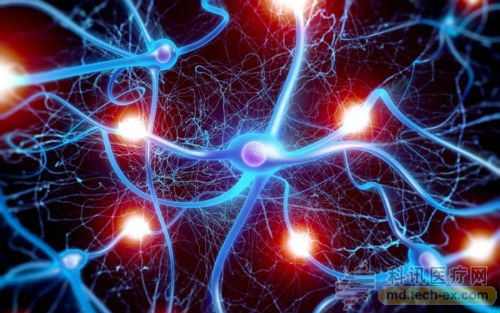Release date: 2017-02-28

Xiao Xi, a flower girl from Wenzhou, suddenly became ridiculous at the end of last year, and her behavior was abnormal. She thought that the spirit was out of the situation, and the girl even fell into a coma and her life was in danger. Fortunately, while Xiaoxi’s condition is critical, the Department of Neurology of Zhongshan Hospital affiliated to Fudan University has combined multidisciplinary studies to find out the “culprit†in time to cure the disease and save Xiaoxi’s life. The patient recovered and was discharged on February 20.
Xiaoxi’s sudden “mental abnormality†in December last year was accompanied by unclear seizures and limb convulsions. The local hospital diagnosed mental illness as a mental health department, but the condition has not been controlled after treatment. On January 3, 2017, the family held a glimmer of hope and rushed from Wenzhou to Shanghai to the Department of Neurology, Zhongshan Hospital, Fudan University.
After a detailed consultation, the doctor learned that Xiaoxi came to Shanghai for a month before he started vomiting and headaches. His headache was more intense. In a few days, Xiaoxi even went to work at the wrong place, and suddenly he fainted to the ground. Symptoms of limb convulsions, and even later mental disorder, can not be controlled. According to her condition and various examination reports, the initial diagnosis was "autoimmune encephalitis, secondary epilepsy."
Because Xiao Xi's condition is already quite critical, people are already in a coma, frequent limb convulsions, and immediately admitted to the neurology intensive care unit.
Is Xiaoxi a secondary epilepsy caused by autoimmune encephalitis? After admission, the neurology department diagnosed the initial diagnosis by detailed medical history inquiry and improvement of the nervous system examination, combined with related examinations. In order to confirm the diagnosis, the medical team timely tested the patient's cerebrospinal fluid. The test results showed that the antibody of autoimmune encephalitis in the cerebrospinal fluid of the patient was abnormally increased, indicating that Xiaoxi was resistant to N-methyl-D-aspartate. In the case of encephalitis (anti-NMDAR encephalitis), the symptoms of Xiaoxi have been alleviated by targeted immunosuppressive therapy and anti-epileptic treatment.
But the treatment team is not relieved, because there is still a bigger mystery that has not yet been solved - why do patients with such antibodies increase the symptoms of the nervous system? In order to clarify the cause, the doctor performed a pelvic imaging examination of his Xiaoxi and found a cystic lesion in the right ovary. After radiology consultation, the imaging of cystic lesions was clearly diagnosed as "ovarian teratoma". It turned out that the main culprit that led to Xiao Xi’s series of “disorders†was “teeth tumorâ€. Only by removing the cause can the patient be truly saved. Teratoma is a common type of ovarian germ cell tumor, derived from germ cells, divided into mature teratoma (ie benign teratoma) and immature teratoma (malignant teratoma). That is to say, when Xiao Xi was still in the mother's womb, he unfortunately buried the "bane". Early teratoma has no obvious clinical symptoms, and most of them are accidentally discovered during physical examination.
To completely cure Xiao Xi's disease, ovarian teratoma must be removed. However, the patient was seriously ill at the time and the risk of surgery was extremely high. Neurology, obstetrics and gynecology, surgical intensive care unit and anesthesiology experts and related medical staff conducted multidisciplinary consultations, and conducted a comprehensive evaluation of patients' surgical risks, anesthesia risks, epilepsy control, etc. The risk of surgery is minimized.
Under the joint efforts of the multidisciplinary team, the patient underwent laparoscopic right ovarian salpingectomy under general anesthesia on January 18, and was placed in the surgical intensive care unit. After the vital signs were stable, return to the neurology department. treatment. Postoperative pathology showed: right ovarian mature teratoma, and mature brain tissue in some areas. After the operation, the patient's condition gradually improved, the consciousness returned to normal, the epilepsy was completely controlled, the life was able to take care of himself, and the normal communication with the doctors and nurses was carried out. No mental anomalies occurred anymore, and the girl's face reappeared with a smile.
According to Professor Wang Wei, secretary of the Party Committee of the Zhongshan Hospital affiliated to Fudan University and director of the Department of Neurology, there are many types of seizures. This patient is characterized by abnormal mental behavior. In addition to the common tonic-clonic seizures, the seizures are more specific. The involuntary movement of the mouth-mandible, if not carefully judged, is easily misdiagnosed and missed. Even after the diagnosis of epilepsy, it is necessary to check the cause and conduct etiological treatment to better control seizures and reduce related brain damage. The patient's anti-NMDAR encephalitis is very special, and it is a new type of autoimmune encephalitis that has been clarified in the past ten years. The only tumor that is clearly related to the occurrence of this encephalitis is the ovarian teratoma.
Source: Science Network
Dried fruit products as the name implies, dried fruit products are pre-treated fruits after selection, washing and dehydration to the water content of 15 ~ 25% products. The volume of dried fruit is about 11 ~ 31% of that of Fresh Fruit, and the weight is about 10 ~ 25% of that of fresh fruit, so it can significantly save the cost of packaging, storage and transportation, and it is easy to eat and carry. Common dried fruits are raisins, red dates, dried mango, dried kiwi, dried strawberry and so on.
Dried Fruit,Dried Mango,Raisins,Red Dates,Dried Kiwi,Dried Strawberry
Xi'an Gawen Biotechnology Co., Ltd , https://www.seoagolyn.com